Jee Hyun Suh
Seoul National University Bundang Hospital
South korea
Abstract Title: The Role of Kinesiotaping in Atlantoaxial Rotatory Syndrome Associated with Nemaline Myopathy: A Case Report
Biography: Jee Hyun Suh earned her MD degree from Ewha Womans University in 2011 and obtained her PhD in Rehabilitation Medicine from the same institution in 2019. She is currently serving as an Assistant Professor in the Division of Pediatric Rehabilitation at Seoul National University Bundang Hospital. Dr. Suh has authored over 30 peer-reviewed publications
Research Interest: The Role of Kinesiotaping in Atlantoaxial Rotatory Syndrome Associated with Nemaline Myopathy: A Case Report Background: Atlantoaxial rotatory subluxation (AARS) is a rare condition characterized by acute torticollis, often following minor trauma. Conservative treatment shows high success rates, but surgical intervention may be necessary when conservative methods fail. Nemaline myopathy (NM) is a rare neuromuscular disorder characterized by muscle weakness and hypotonia. Although no cases of AARS in NM patients have been previously reported, underlying laxity and muscle weakness may increase risk and complicate management. Case Presentation: We report a case of an 8-year-old female diagnosed with NM who developed AARS following a posterior pharyngeal flap procedure. Initial conservative management with Gardner-Wells–style tongs traction and Miami brace failed to maintain reduction due to underlying hypotonia and ligamentous laxity. Kinesiotaping at sternocleidomastoid muscles was applied as an adjunctive therapy to facilitate muscle stabilization. Following kinesiotaping, the patient showed sustained improvement, allowing for the removal of traction and successful transition to kinesiotaping combined with a Miami brace. Conclusion: This case suggests that kinesiotaping may serve as a useful adjunct to conservative treatment in patients with AARS who have underlying muscle weakness and hypotonia. By providing support and promoting muscle facilitation, kinesiotaping may enhance stability and reduce recurrence after reduction.

